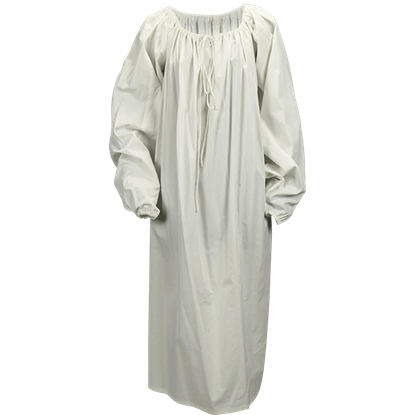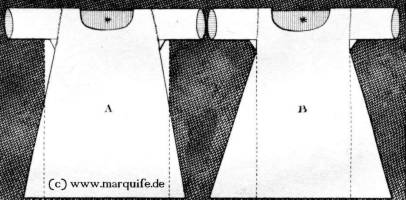One day this week a bunch of us went to Yocheved's house to help empty the many bookshelves. Our own bookshelves are overflowing so I actually had to be particular about what I took. One of the books that I took was
something like this under their clothes, it was their base layer, a simple garment,
that was simply cut. Often there was a deep slit in the front of this garment which made breastfeeding easy.
In eastern Europe, those chemises were often embroidered and worn as blouses.
Looking at the photos of the brusttichels I realized that they solve an issue of modesty for Jewish women as they went about their business in the pre-modern world. We all have the image of the St Pauli girl in our heads serving up both beers and her breasts.
Jewish women were historically particularly vulnerable to rape in Eastern Europe. Modesty, was a way to keep women a bit safer, a bit less vulnerable.
As I looked at the photos of the brusttichels I was reminded of something else.
The image above is a diagram of the shrouds used to dress Jewish women. The garments themselves are clearly based on the clothing of the pre-modern world. When we of the Chevre Kadisha finish dressing a body it always looks to me like someone from a time hundreds and hundreds of years ago. Each of the items is cut large and has a drawstring to pull the item close to the body.
You don't go to school to be part of a Chevre Kadisha. You learn the tasks over time. The tasks involved in preparing a body for burial have been passed down not so much in books but in people teaching one another and passing wisdom from one person to the next.
We begin dressing the body with the bonnet shown at the bottom. It is a rectangle of fabric with a drawstring along the bottom edge. we place the bonnet on the head and then carefully tie the drawstricg tight and arrange the gathers around the back of the neck. The next garment we put on the body is a square with a drawstring on one side.
In our Chevree use this garment to cover the face, with the drawstring going around the neck and the top endges tucked into the bonnet. In other Chevres this garment is tied around the waist like an apron. I am going to get back to this garment in a minute.
Next we put on the k'tonnet or shirt, it is a front opening chemise it is the top left-hand drawing. After the k'tonnet we don the body with the michnisayim or pants. They have a drawstring waist. Lastly, we put on the m'il or coat. It looks similar to the chemise but it has a collar.
One of the issues we sometimes have in dressing a body is arranging the chemise and the coat so the body is modest, with the breasts covered. Always, after we dress the body before we wrap it in the big wrapping sheet we always carefully arrange the front openings of the chemise and the coat so the body is covered up. I wondered if the garment we have been using as a face covering might have at one point in time been used as a brusttichel, to cover the deep openings in the chemise and the coat to protect the modesty of the dead.
There isn't very much that has been written about the historical development of shrouds. There hasn't been a whole lot written about the history of Jewish women's dress in Eastern Europe. I had never before seen a brusttichel. But this is my educated guess about the original use of this particular shroud garment.
And this is also Friday, and a challah baking week. I made stuffed challot again.
While I was cooking today my thoughts were in Phoenix, Az where our older son has been working for the past several weeks. Tonight after work he is driving to Tuscon to spend Shabbat with my cousin. My cousin used to live a couple of blocks away and used to spend a fair amount of time with us. My son hasn't seen my cousin probably since he was in high school. My cousin and I exchanged a few texts this morning. She was excited about spending time with my son. I was overwhelmingly grateful that she was making the effort to cook for him, to just be her kind self to my son.
If my son were here with us he would be eating
The meal will be rounded out with a green salad.











Sending you and your family, wherever they are, love….
ReplyDeleteSending love right back to you and your growing family
ReplyDelete